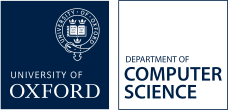A tortuous pathway to develop, validate, and translate patient-specific computational models of left atrial haemodynamics to support occluder implantations
- 14:00 22nd November 2024 ( week 6, Michaelmas Term 2024 )(this is a virtual seminar)
The influence of the left atrial appendage (LAA) and its different possible morphologies in atrial haemodynamics and thrombus formation is not fully known yet. In this talk I will present our most recent work analysing blood flow characteristics in relation with LA/LAA morphologies to better understand conditions that may lead to thrombus formation. A web-based platform, named VIDAA (Virtual Implantation of Devices for Left Atrial Appendage implantation) has been developed to support the clinical translation of the generated computational tools for the planning of the implantation of left atrial appendage occluder devices, which are used to cover the LAA in patients with atrial fibrillation. I will also detail the tortuous pathway required for the technology transfer of such tools.
